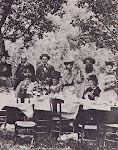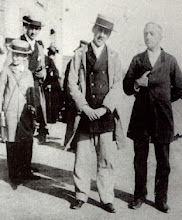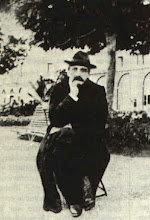Georg Steiner's first essay in his book My unwritten Books largely deals with the british biochemist Joseph Terence Montgomery Needham who is famous for his work on chinese science. The results of Needham's work (some of his work) can be admired by reading the Science and Civilisation in China Series, as yet unfinished and an undertaking that Steiner compares with Proust. About Science and Civilisation in China can be said that it "is planned as a history of science, technology and medicine in China, seen in its fullest social and intellectual context, and illuminated by a deep and sympathetic understanding of the cultures of both East and West."* The volumes contains all sorts of different languages with different signs such as Arabic or Chinese or Ancient Greek, different images, footnotes that are floating over several pages, in one dozen languages. Steiner emphasises that the Science and Civilisation in China (SCC) together with Russel's and Whitehead's Principia mathematica form a peak in the history of typography, layouting and of publishing as a whole, and that before the publishers could rely on computers.
Steiner says the SCC can only be appropriately compared with Proust's Recherche and sees the following similarities between Needham and Proust:
- both SCC and the Recherche are are to Steiner the most important attempts of remembrance, of remembering, of total reconstruction that one can find in thinking and the imagination in modern times. Steiner calls them architects of time and archeologists of consciousness.
- both revive a phantastic, rich and intrictated past to new live, Proust and Needham both create each temporal epos of a density and a richness of detail that contains so many relations and links and hints that they gain an inner context, an inner coherence, an inner bearing.
- both can be brought into an eternal triangle with Dante's comedia. (why? Steiner doesn't elaborate this, but refers to what Mandelstam has written on Dante)
- wherever one opens either SCC or the Recherche, one is immediately aware of the multitude of connection that a single detail has to all kinds of other details. Steiner employs here the notion of counterpoint and compares the Recherche with a mosaic and SCC with a Gobelin.
- the way one sees those little details and their inner coherence are a direct result of the conditions of the compositon of SCC and the Recherche. And in both cases it wasn't foreseeable that the books would grow out to such magnitude.
- According to Steiner all big art's aim is to create own specific forms, own specific ways to "give" form and then is about to spirally turn back to its origin. Steiner sees a slight difference here between SCC and the Recherche. He says that in the Recherche this is obvious, for it is just plainly the topic of the book whereas in SCC this is also the case, but it is not so obvious to see and develops in a movement that gets stronger with each volume.
One has to add here, Steiner compares two works of which one is not yet finished, Needham is dead and volumes of the SCC still are being published.
- There is an interesting statement by Steiner that he unfortunately (for just this would be very interesting) does not elaborate further. He says that Proust wanted to capture relativity metaphorically.
* cf. - more info on Needham and his work
Saturday 15 March 2008
Subscribe to:
Posts (Atom)


